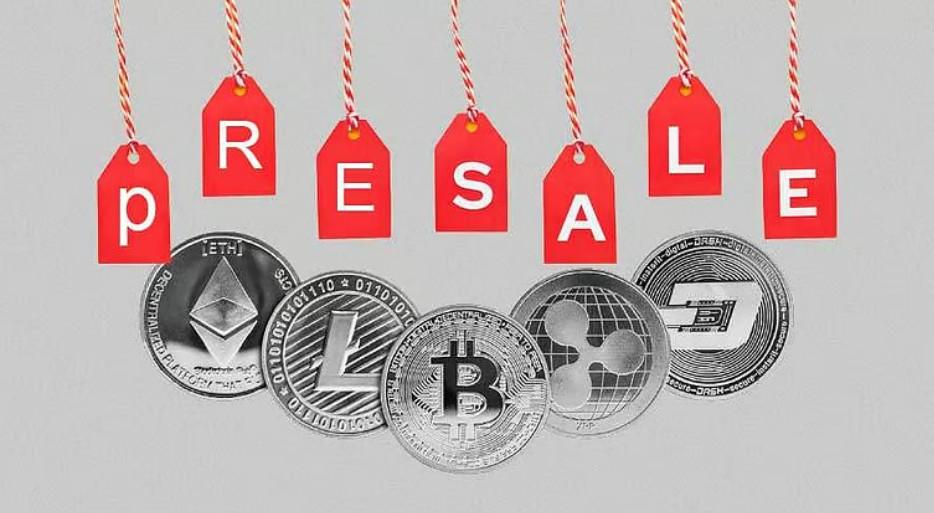Crypto Presale?

A crypto presale is an early-stage investment opportunity in which blockchain projects offer tokens to select investors before going public, often at a discount. It is an important fundraising phase for projects, as it helps them acquire cash, establish a loyal community, and gain early momentum. This tutorial will explain how to join a crypto presale, what to watch out for, and how to choose the Best Crypto Presale for your goals.
What Is a Cryptocurrency Presale?
A cryptocurrency presale is an early-stage fundraising event in which blockchain startups offer tokens to select investors prior to the formal public sale. It allows users to purchase tokens at a discounted price before they are posted on major exchanges. This phase assists projects in obtaining initial funding, gaining momentum, and establishing a strong network of early supporters.
Pre-Sales Differ From ICOs, IDOs, and IEOs
Initial Coin Offering (ICO): A public token sale open to all investors, allowing them to purchase tokens before they are listed on exchanges.
Initial Exchange Offering (IEO): Tokens are offered via a cryptocurrency exchange, which serves as an intermediary to improve security and authenticity.
Initial DEX Offering (IDO): Tokens are launched on a decentralized exchange (DEX), allowing for immediate trade after sale.
Crypto Presale: A private or semi-private sale before a public offering, typically at a cheaper price with additional incentives.
Choosing the Best Crypto Presale includes more than pricing. A good presale has transparent tokenomics, a roadmap, community governance, and a robust technical base. These variables lower risk and boost success.
Why Early Investment Might Be Profitable
Investing in a crypto presale gives investors the opportunity to purchase tokens at a reduced price before they enter the market. If the initiative acquires traction and demand rises, early investors may reap large returns. Many successful blockchain projects, such as Ethereum and Binance Coin, began with presales that yielded significant gains to early investors.
Why Projects Conduct Pre-Sales
Raise Funds: Pre-sales raise funds for development, marketing, and operational expenses.
Creating an Early Investor Base: Presales attract early adopters who can raise awareness and help the project expand.
Creating Initial Liquidity: Raising funds prior to the public launch helps ensure smooth trading and liquidity once the token is launched on exchanges.
Step-by-Step Guide for Participating in a Crypto Presale
Clearly establish your investment objectives. Determine whether you are investing for short-term gains, long-term holdings, or to promote a technical advancement. Risk tolerance is also important—invest only what you can afford to lose. Diversifying across various projects can help to reduce losses.
Choose presales that are consistent with your risk tolerance and financial goals. Before investing in a project, research its basics, market potential, and competitors.
Ensure that your wallet is set up for the correct blockchain. Ethereum presales necessitate the use of the Ethereum Mainnet, whereas the Binance Smart Chain and Solana initiatives require adjustments to their specific network settings.
Presales frequently accept specific cryptocurrencies, such as Ethereum (ETH), Binance Coin (BNB), and Tether (USDT). Confirm the necessary token for participation in advance.
Many presales need investors to join a whitelist, which gives them priority access to token purchases prior to the public sale. Whitelisting enables projects to regulate demand and reward early backers while avoiding bots from overpowering the auction.
Most presales use smart contracts, in which investors pay funds to a specific wallet address. To avoid transferring payments to the wrong address, carefully follow the official instructions.
To guarantee equitable distribution, contribution limits are frequently imposed during presales. Some initiatives require a minimum buy-in, while others limit individual contributions to prevent large holders from controlling the supply.
Once the transaction is complete, use a blockchain explorer to verify the token allocation in your wallet. Some projects release tokens immediately, while others use vesting schedules, which means tokens will be unlocked over time.

